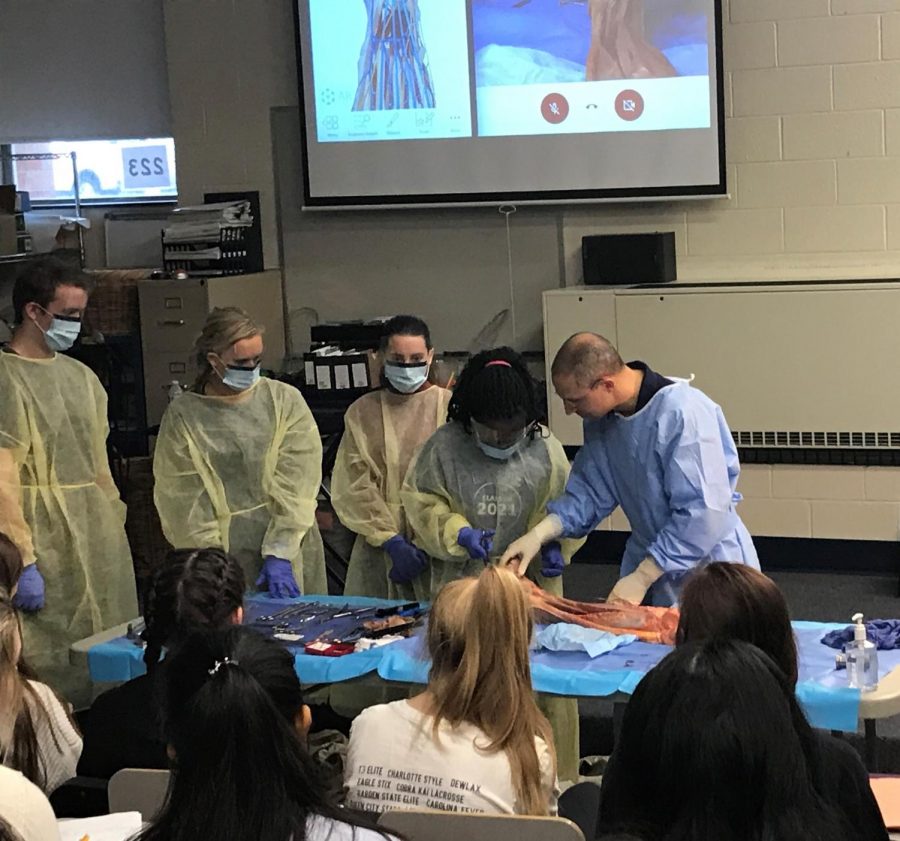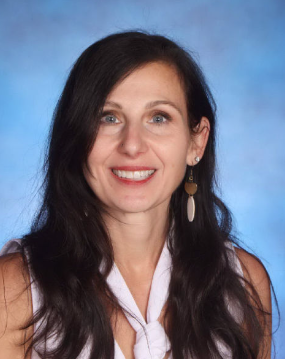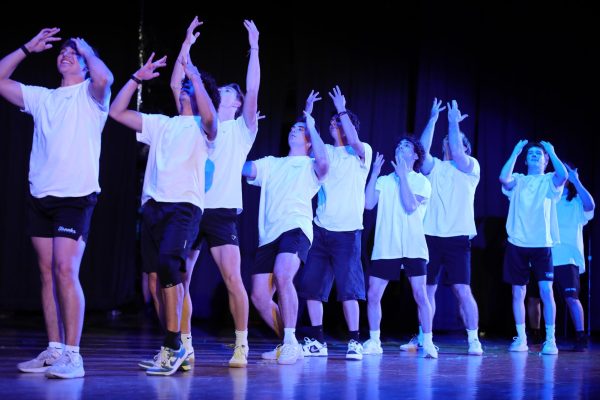Science Students Witness Human Leg Dissection
Junior Kayla Huggins works on dissecting the leg with Dr. Avalone.
About 80 Honors Anatomy and AP Biology students observed a cadaver leg dissection in mid-January in the Chorus room to give practical application to content learned in their classes.
The live event was arranged by Science teacher Alexandra Helle, in cooperation with Science teacher Alison White. Helle coordinated with St. Luke’s University Health Network and the Venel Institute, anatomical research and medical training facility in Bethlehem, PA, who provided the leg.
Ten of the 80 students went through an application and interview process to get the opportunity to “Scrub-in” on the dissection.
“The dissection was like nothing I have ever experienced before,” said senior Paulina Georgoutsos. “Being able to learn in a hands-on fashion has helped me to truly understand the function of the knee and how specific injuries occur.”
Doctor Nicholas Avallone and the ten students performed a meniscus repair surgery in addition to the knee and ankle dissection. All students in the room had the opportunity to touch the leg during the dissection.
Students said the dissection helped them realize the internal anatomy of a human is much different than they thought.
“I was surprised at how the inside of a foot looked,” said junior Daniel Kuster. “I didn’t realize the heel was that fatty.”
The cadaver leg was from a 91 year old male who passed away from liver cirrhosis. He had a history of lymphoma, pancreatitis, congestive heart failure, and macular degeneration.
The leg had been fresh frozen for the last two months. The rest of the body will be used for other scientific research or practice through the Venel Institute.
Students who participated in the dissection said the experience persuaded them towards a career in medicine.
“I have always wanted to become a physician of some type and after that, I feel more inclined than I did before to look into the orthopedic specialty,” said Kuster.
Helle said the dissection was beneficial for students to see since most students do not get to participate in such a thing until medical school. Helle said she plans on coordinating another dissection next year with an arm or hand because of how valuable the experience was for students.
“To see the actual anatomy of the body when learning concepts is important,” she said, “because something is lost when that information is transferred to texts, videos and diagrams.”





